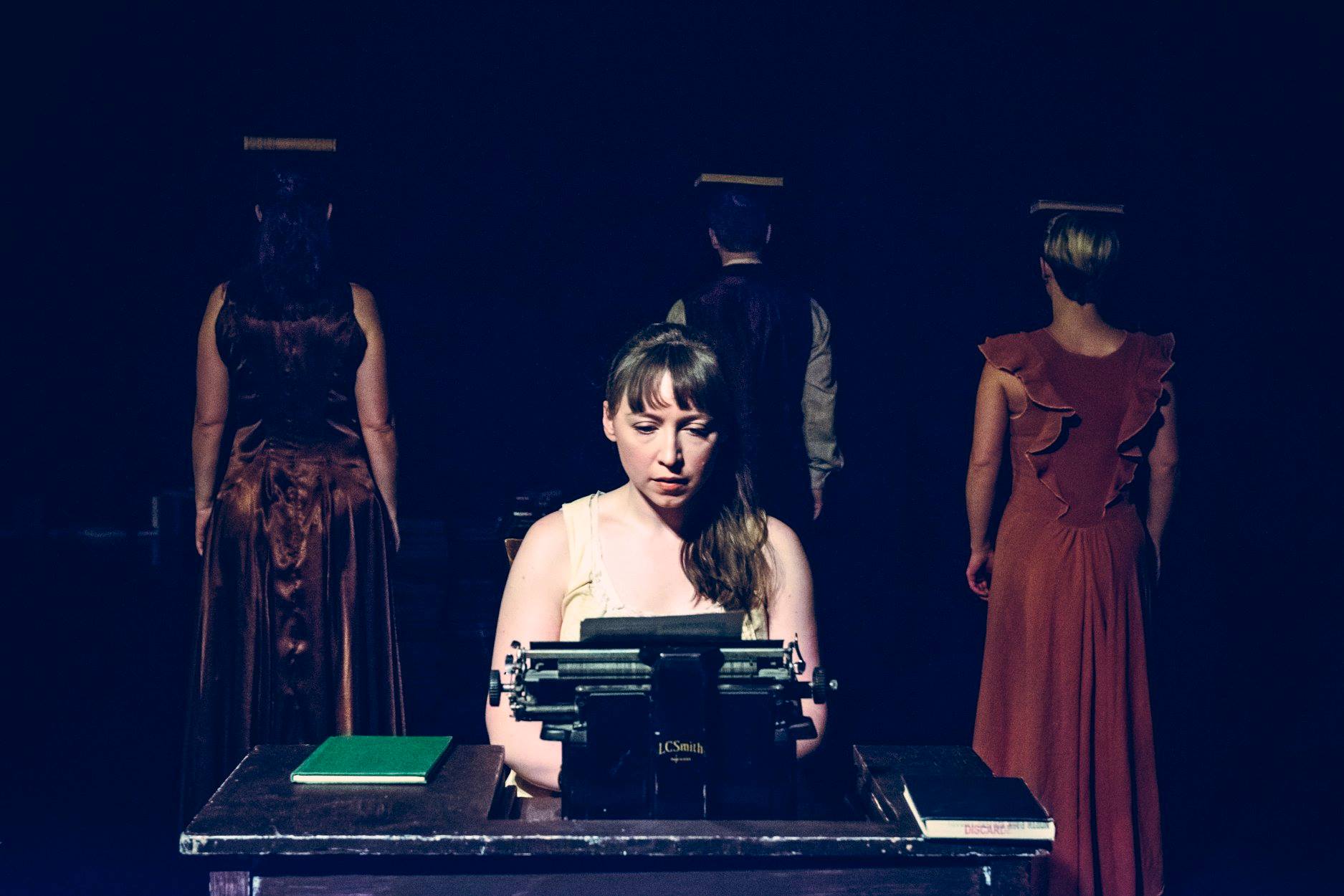CHICAGO — Walking in for RE|dance group’s The Mysterious Disappearance of the Second Younger Sister, Thursday and Friday, the dark, deep Hamlin Park Theater was adorned with a writer’s desk sporting an antique typewriter in the foreground and an antique dress form sporting a tailored women’s jacket in the background. The old ornate windows that, with the theater’s beautiful wood beams are its signature architectural elements, are left uncovered, permitting a city glow to spill into the performance space. Piles of hardcover books fill the spaces around and in-between these objects, a relatively cluttered, but organized space for a dance to take place. It’s an apropos metaphor for how I tend to view Michael Estanich’s work — cluttered but organized. This one is an evening-length work mined from a dance he started nearly ten years ago, originally created for his company’s first concert.
Estanich is the artistic director of RE|dance group and artistic partner to Lucy Vurusic Riner, who holds down the fort while Estanich spends most of the year in Stevens Point, WI as a dance professor at the University of Wisconsin. The long-distance relationship is part of the model, with RE|dance’s concerts built through intensives, mainly during school breaks (Riner is also a teacher, on the dance faculty at New Trier High School). For the most part, it works. Estanich is the primary creator of the group, with Riner as the main administrator and rehearsal director providing a continual presence that affords RE|dance staying power in Chicago.

As Mysterious Disappearance begins, Stacy DeMorrow is seated at the typewriter musing over some books and papers, typing intermittently, with three figures (Riner, Estanich, and Daiva Bhandari) behind her. They face upstage, carrying books on their heads; all are wearing costumes alluding to the Victorian era. Swirling phrase work, which is less balletic than more recent works, is interspersed with characterization (mostly by DeMorrow) leading us to understand that she’s a writer who becomes trapped in her fantasy world.
DeMorrow goes to and from her typewriter, striking the keys with increasing frenzy as her companions aid and abet her quasi-madness. It’s as though we are witnessing this story as it’s being written. Interactions among the quartet present complex relationships: weight sharing is met by pushes and shoves. I sensed this dynamic — sort of like a sibling rivalry — throughout the work: pushing and pulling, yielding and resisting, nestled into an underlying musical pulse of cello by Zoe Keating, or prepared piano by Hauschka & Hildur Gudnadottir.
This creates a passionate, beautiful landscape to watch (though much of the partnering from this same-height cast, sadly, couldn’t be saved). But what I felt most of all from this work is the artist’s burden — those who are compelled to make at all costs. DeMorrow returned to her keyboard again and again as her own characters tormented her, unveiling the fragility of this literary world as each dancer stepped atop a teetering platform of books and collapsed to the floor with those pages all around them.

It seems fitting for Estanich to return to this work (which I admit I hadn’t seen before) as a way to mark the progression of his choreographic career. He is a man who, like DeMorrow’s character in his dance, also seems compelled to make.
The Mysterious Disappearance of the Second Younger Sister shares much in common with an aesthetic built over the past decade. Estanich’s greatest strengths are building luxuriously satisfying dance phrases and placing them within exquisite, magical environments (thanks in no small part to his long-time technician and lighting designer Sarah Lackner).
His weakness is editing.
Although, Mysterious Disappearance is uniquely succinct, laying out movement ideas and sticking with them just long enough. Where I felt this work showed the naiveté of an earlier Estanich is in the storytelling. More recent works like The Long and Forgotten Winter, It’s About Love Again this Year, and A Place at the Edge of the World to Call our Own shape poignant narratives that are missing here. That’s not to say it’s soft on content, rather, there’s an otherworldly atmosphere chock full of context clues that seem like they should contribute to a linear narrative, but don’t.
I don’t know that that’s a bad thing. This work leaves a palpable, but distinctly different taste in my mouth from RE|dance dances of late. So in a paradoxical way, returning to the past feels new, and refreshing.
